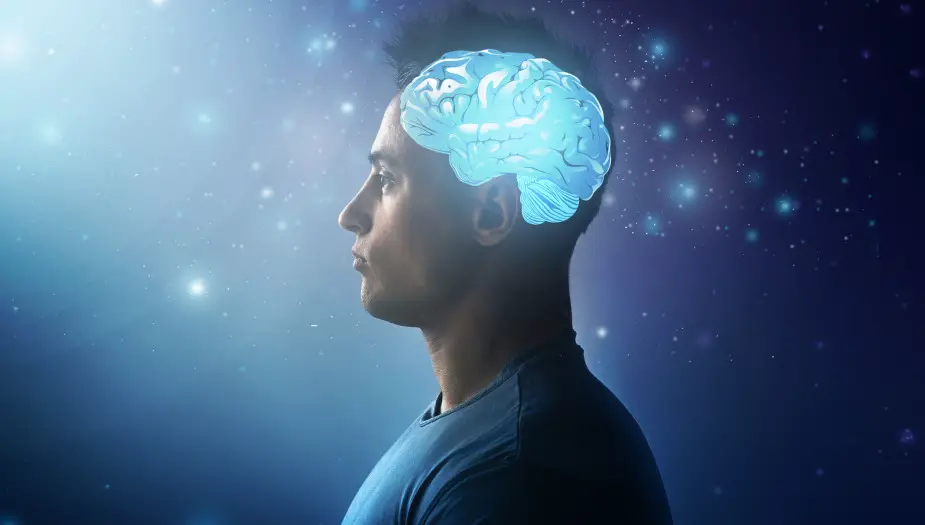Dive into the azure sea of color psychology with us as we explore the intriguing question: Is blue good for mental health? Spoiler alert: You might just end up repainting your walls!

Is Blue Good For Mental Health
Welcome, color enthusiasts and mental health mavens, to a chromatic journey into the world of color psychology. Ever wondered why you feel so calm gazing up at a clear blue sky, or why staring out at the sea brings you a sense of peace?
Today, we’ll seek answers to the question: “Is blue good for mental health?”
Fasten your seatbelts for this scenic, sapphire-studded expedition into the profound effect of blue on our minds and moods. Prepare to be washed over by a wave of tranquility, and who knows, you may even find yourself investing in a blue-tinted mood lamp by the end of this post!
Azure Beginnings: An Introduction to Color Psychology
Prismatic Perceptions: The Psychological Impact of Colors
The world is a kaleidoscope of colors, each with its unique psychological impact. As the brushstrokes on the canvas of our lives, colors can evoke a symphony of emotions and reactions. They can soothe or stimulate, uplift or depress. In the parlance of our technicolor world, we’re all a bit of an artist, splashing our personal and professional lives with color.
Chasing Rainbows: The History and Evolution of Color Psychology
Color psychology is far from a modern invention. Our ancient ancestors were onto it long before us! From the blue-clad Egyptian pharaohs seeking harmony, to the red-painted warriors of old, the psychological power of color has been recognized and utilized throughout history. Fast forward to the 21st century, color psychology has evolved into a vibrant field, informing everything from marketing campaigns to interior design.
Blue Notes: The Psychological Influence of Blue

A Symphony in Blue: The Emotional Effects of Blue
Blue, the color of sea and sky, holds a special place in the color spectrum. It’s the maestro of tranquility, the conductor of clarity. It’s been found to slow heart rate, reduce body temperature, and even alleviate pain. Like a soothing lullaby, it can put the mind at ease and bring forth feelings of peace and relaxation. The question then isn’t whether blue has an effect, but rather how profound this sapphire symphony is on our psyche.
Bathing in Blue: Real-world Examples of Blue in Action
In hospitals, blue is often used to create a calming environment. Social media platforms like Facebook and Twitter use blue as their primary color, leveraging its associations with trust and reliability. As you read this on your screen, consider the ‘blues’ you interact with daily, and how they influence your mood and cognition.
Ocean Depths: The Science Behind Blue’s Calming Influence
Riding the Wavelength: How Blue Light Affects Us
Blue light, part of the visible light spectrum, can both stimulate and calm us. During the day, it boosts attention and mood. At night, however, excessive blue light from screens can disrupt sleep. Like the ocean, blue light has its ebbs and flows, and understanding these can help us harness its benefits while avoiding the pitfalls.
Tidal Forces: Neurological and Physiological Responses to Blue
Our response to blue isn’t just in our heads – it’s in our brains and bodies too. When our eyes perceive blue, they send signals to parts of the brain that regulate hormones affecting our mood and stress levels. It’s a tidal wave of influence, with blue at the helm, guiding us towards a shore of tranquility.
Blue-tiful Mind: Blue’s Impact on Mental Health

Blue Skies Ahead: How Blue Promotes Calm and Focus
Blue, the color of vast oceans and clear skies, has a significant role to play in mental health. It’s like a cool breeze on a hot day, soothing our minds and fostering focus. Studies have shown that blue can enhance creative problem solving, reduce stress, and promote a sense of well-being. So, if you’re looking for calm amid the storm, blue might just be your port in the storm.
Shades of Serenity: Blue’s Role in Stress Reduction and Sleep Quality
Aside from promoting calm and focus, blue also has a significant role in stress reduction and sleep improvement. Being in a blue-painted room or gazing at a blue image can lower your heart rate and blood pressure, bodily signs of stress. Moreover, the use of blue light filters in the evening can help maintain our natural sleep-wake cycle, leading to better sleep quality. It seems that blue is the color of our inner zen master, guiding us towards tranquility and restful sleep.
Sea Change: Harnessing the Power of Blue for Mental Well-being
Blue-spiration: Ways to Incorporate More Blue into Your Life
If you’re now a blue believer, you might be wondering, “How do I get more of it in my life?” Consider painting your room a calming shade of blue, or perhaps investing in blue decor. Don’t overlook your digital spaces, either – a serene blue wallpaper on your devices could bring a touch of calm to your hectic digital life. Or, take a stroll under the blue sky or by the blue sea. It seems that feeling blue isn’t always a bad thing!
Navigating the Blue: Tips for Maximizing the Mental Health Benefits of Blue
To maximize the benefits of blue, try pairing it with complementary practices. Blue surroundings could work wonders when combined with mindfulness exercises or calming breathing techniques. Also, remember to balance your exposure to blue light, using blue light filters on your devices during the evening to protect your sleep.
Beyond Blue: Exploring Other Colors’ Impact on Mental Health
Colorful Characters: Other Beneficial Colors for Mental Health
While blue is the star of today’s show, let’s not forget about the supporting cast. Green, with its connection to nature, can also be calming and restorative. Yellow can uplift our mood and energy, while purple can stimulate creativity. It seems that the palette of mental health is as diverse as the colors of the rainbow!
Rainbow Connection: The Interplay of Different Colors on Mood and Mind
Colors don’t exist in isolation. Their effects can be influenced by combinations, culture, personal experiences, and even individual differences in color perception. Understanding the interplay of different colors can help you create a personal color palette that suits your mental health needs and aesthetic preferences. After all, our minds are not monochrome, but vibrant and colorful landscapes.
True Blue: Final Thoughts on Blue and Mental Health
The Color of Calm: Summarizing Blue’s Benefits for Mental Health
So, is blue good for mental health? In the sea of color psychology, blue is like a calming current, guiding us towards peace and mental clarity. Its effects on our mind and body suggest that it’s not just a color, but a tool for mental well-being.
Paint it Blue: Embracing Blue for Better Mental Well-being
As we conclude our chromatic journey, it’s clear that blue has a lot to offer in promoting mental health. So, why not invite more blue into your life? Whether it’s a blue wall, a blue shirt, or simply more time under the blue sky, a splash of blue could be just the thing for
